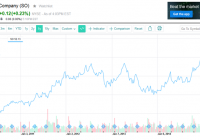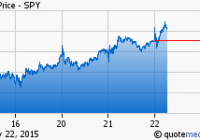Why Dave Ramsey Is Wrong
There is no denying that Dave Ramsey has done a commendable job of bringing back our grandparents’ financial values into popular culture. Many Americans have been poor stewards of their finances and have been saddled with avoidable debt. Ramsey’s advice has helped thousands get back on the right financial track. Even at my own company, we use the debt snowball of Financial Peace University to help right the finances of our pro-bono planning clients. Ramsey has become a multimillionaire by simply telling people to live within their means by creating and maintaining their household budget. Certainly, in today’s society of zero interest and only three easy payments of $19.99, this is no simple task. However, once a person overcomes modern-day financial temptation and begins investing in his or her future, Ramsey drops the ball and becomes a spokesperson for one of the most confusing industries in America, financial product sales. Ramsey recommends his followers work with brokers who are paid high commissions for investing in mutual funds. Ramsey, as popular as he is – and no one disputes that – has missed the boat on one thing – dismissing the credibility and sensibility of a fiduciary and fee-only financial advisor. That may not sound like a big deal, until you understand that picking the right financial advisor can lead to an overall stronger financial foundation for your family, your future and your state of mind. Let’s look at this a bit closer. The Fee-Only Advantage Fiduciary (your best interest) fee-only advisors take a different approach to investing. There are no selling products; fee-only advisors are not paid a commission from a product. This removes the conflict of interest that brokers carry in their relationships with their clients. This also causes the advisor to look differently at the product that he or she recommends to the client, which is why we see a much higher usage of index funds from the fee-only community. These highly diversified funds carry very low fees, because they don’t pay any advisor any commission, and historically have beat actively managed, commission mutual funds over long periods of time. A well-diversified index fund portfolio should cost no more that 0.25% a year, with most of the funds trading at no charge. Fee-only advisors are compensated as a percentage of assets they manage, by a flat monthly retainer, or bill hourly for financial planning. Each of these options are free from any conflict that the advisor gives to the client. Most fee-only firms also include financial planning in their asset management fees. A financial plan sets how the portfolio should be allocated. Proper asset allocation is a large ingredient to successful long-term investing. A mutual mess Ramsey, on the other hand, encourages his followers to contact a broker within his referral network when they are ready to start investing. In the interest of full disclosure, his network rejected my firm telling me that being a fiduciary fee-only financial services firm we did not qualify because his network is made up of only commission brokers. Ramsey recommends that his flock work with a broker and invest in a mutual fund that has a long track record of good results vs. the S&P 500. He then adds that the investor should purchase and stay put, meaning don’t sell when the market falls, be a buy and hold investor. The broker will collect a 5% +- commission from the sale and will receive a smaller percentage on a quarterly basis, assuming the investor does not sell the fund. Additional investments into the fund, whether it is annually or monthly, will also be charged the large upfront fee. Ramsey supports this model because he believes this to be the cheapest form of investing compared to fee-based firms that would be charging 1.2% a year to give advice and provide planning services. In the 80’s and early 90’s this may have been the correct advice, but unfortunately the US brokerage business has taken a turn for the worst, in that products are not built to benefit the client, they are built to make money for the firm and the broker. A retired executive from a large brokerage company recently told me he got out because his firm no longer focused on the client, they focused on what they could get away with selling to the client. Even if Ramey’s referral network has the best intentions, history is against them. There have been very few mutual funds that actually beat the S&P 500 net of fees over long periods of time. Some get lucky over a 10 year stretch, but after 15 years the list is very short. Historically we see less than 1% of funds beat the S&P 500 (after fees) over 30 years. This might be a long time, but how long are you going to be invested? If you live to age 95 and are in your 40’s or 50’s, 30 years is not that long. Another issue is Ramsey’s buy and hold philosophy. The idea is great on the surface, but when a year like 2008 strikes many individual investors, without a good financial support system, are going to sell. If you get burnt, you first want to stop the pain (sell low) and when you go back, if at all, it will be when you feel ready (buy high). Buy and hold is the correct advice, but when you call the broker for reassurance there is always the potential of him or her selling you another fund at 5% commission to help “make you feel better,” while padding his or her pockets with more of your money. This is where a fee-only advisor earns their fee. By keeping the client focused long term, buy high and sell low tendencies can be eliminated, increasing the client’s rate of return. Ramsey also recommends that you not own bonds. He states “bonds are mistakenly believed to be safe.” While it is true – not all bonds are safe – there is a good case to be made for adding the right bonds to a portfolio to lower volatility. Bonds in a portfolio help keep you from hitting the panic button when it feels like the stock market is falling into oblivion. A fee-only advisor can help choose the right bonds for the portfolio. Ramsey also wants his followers to stay away from Exchange Traded Funds (ETFs). ETFs, if used properly are more tax efficient than any mutual fund, held outside retirement accounts, are more liquid and offer cheaper fees. There are good ETFs and bad ETFs, and I think Ramsey has thrown the baby out with the bath water with this advice. Perhaps it is because his network of advisors would not receive a commission or trailing fee if ETFs were used. What should Ramsey do? If Ramsey and his network of brokers wanted to truly work in the best interest of his radio and print flock, I propose that he endorse a network of fee-only advisors, simply being paid by the hour. These advisors would help create portfolios for the Ramsey following at a fraction of the cost of his commission advisors, all while giving unbiased investment advice. In the end, Ramsey’s math does not add up and the investor loses. Ramsey, who tweeted that he was the “big dog on the porch” in a recent tweet with fee-only advisor Carl Richards, could use his status to help make all advisors work in the best interest of their clients, as is being discussed at the SEC in 2015. Instead, he sits in the pockets or every big insurance company on Wall Street who wants to maintain the current system of taking from Main Street to pad the profits of Wall Street.

